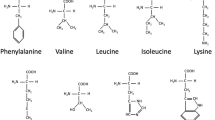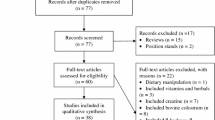Abstract
The objective of this study was to identify some proteins associated with testosterone-related differences in myogenesis and adipogenesis between bulls and steers. Global proteins were monitored in skeletal muscle and adipose tissue from bulls (n = 20) and steers (n = 20), respectively. We identified four differentially expressed (twofold or more) proteins in skeletal muscle from bulls, myosin light chain 1 (MLC1), ankyrin repeat domain-containing protein 1 (ANKRD1) and heat shock protein beta 1 (HSPB1) that were up-regulated and cofilin 2 (CFL2) that was down-regulated, and also identified two down-regulated proteins in adipose tissue, transaldolase 1 (TALDO1) and l-lactate dehydrogenase B chain (LDHB). In vitro, after myogenic differentiation of a bovine cell line, the mRNA expression of HSPB1 not only increased approximately tenfold in response to differentiation but threefold in response to testosterone addition, respectively, but that of ANKRD1 and CFL2 did not significantly change in response to myogenic differentiation or testosterone addition. Likewise, after adipogenic differentiation of a bovine cell line, the mRNA expression of TALDO1 and LDHB did not significantly vary in response to adipogenic differentiation or testosterone addition. Therefore, we suggest that HSPB1 could have an important role during testosterone-related myogenesis.



Similar content being viewed by others
References
Mellor D, Molony V, Robertson I (1991) Effects of castration on behaviour and plasma cortisol concentrations in young lambs, kids and calves. Res Vet Sci 51:149
IS J (1995) Assessment of acute and chronic pain after different methods of castration of calves. Appl Anim Behav Sci 46:33–48. doi:10.1016/0168-1591(95)00635-4
Fisher A, Knight T, Cosgrove G, Death A, Anderson C, Duganzich D, Matthews L (2008) Effects of surgical or banding castration on stress responses and behaviour of bulls. Aust Vet J 79:279–284. doi:10.1111/j.1751-0813.2001.tb11981
Jacobs J, Miller J, Sauter E, Howes A, Araji A, Gregory T, Hurst C (1977) Bulls versus steers. II. Palatability and retail acceptance. J Anim Sci 45:699
Zhou Z-K, Gao X, Li J-Y, Chen J-B, Xu S-Z (2011) Effect of castration on carcass quality and differential gene expression of longissimus muscle between steer and bull. Mol Biol Rep. doi:10.1007/s11033-011-0680-y
Bmed B, Klueber K (2004) Structural and functional analysis of murine skeletal muscle after castration. Muscle Nerve 12:67–77. doi:10.1002/mus.880120113
Schoonmaker J, Loerch S, Fluharty F, Turner T, Moeller S, Rossi J, Dayton W et al (2002) Effect of an accelerated finishing program on performance, carcass characteristics, and circulating insulin-like growth factor I concentration of early-weaned bulls and steers. J Anim Sci 80:900
Singh R, Artaza J, Taylor W, Gonzalez-Cadavid N, Bhasin S (2003) Androgens stimulate myogenic differentiation and inhibit adipogenesis in C3H 10T1/2 pluripotent cells through an androgen receptor-mediated pathway. Endocrinology 144:5081. doi:10.1210/en.2003-0741
Singh R, Artaza J, Taylor W, Braga M, Yuan X, Gonzalez-Cadavid N, Bhasin S (2006) Testosterone inhibits adipogenic differentiation in 3T3-L1 cells: nuclear translocation of androgen receptor complex with {beta}-catenin and T-cell factor 4 may bypass canonical Wnt signaling to down-regulate adipogenic transcription factors. Endocrinology 147:141. doi:10.1210/en.2004-1649
Oh Y, Cho S, Baek K, Choi C (2005) Effects of testosterone, 17β-estradiol, and progesterone on the differentiation of bovine intramuscular adipocytes. Asian australas J Anim Sci 18:1589–1593
Christoffersen B, Raun K, Svendsen O, Fledelius C, Golozoubova V (2006) Evalution of the castrated male Sprague–Dawley rat as a model of the metabolic syndrome and type 2 diabetes. Int J Obes 30:1288–1297. doi:10.1038/sj.ijo.0803261
Mauras N, Hayes V, Welch S, Rini A, Helgeson K, Dokler M, Veldhuis J et al (1998) Testosterone deficiency in young men: marked alterations in whole body protein kinetics, strength, and adiposity. J Clin Endocrinol Metab 83:1886
Urban R, Bodenburg Y, Gilkison C, Foxworth J, Coggan A, Wolfe R, Ferrando A (1995) Testosterone administration to elderly men increases skeletal muscle strength and protein synthesis. Am J Physiol Endocrinol Metab 269:E820
Fryburg D, Jahn L, Hill S, Oliveras D, Barrett E (1995) Insulin and insulin-like growth factor-I enhance human skeletal muscle protein anabolism during hyperaminoacidemia by different mechanisms. J Clin Invest 96:1722. doi:10.1172/JCI118217
Boguth G, Harder A, Scheibe B, Wildgruber R, Weiss W (2000) The current state of two-dimensional electrophoresis with immobilized pH gradients. Electrophoresis 21:1037–1053. doi:10.1002/(SICI)1522-2683(20000401)21:6<1037
Jin X, Lee JS, Kwak S, Jung JE, Kim TK, Xu C, Hong Z et al (2006) Myogenic differentiation of p53- and Rb-deficient immortalized and transformed bovine fibroblasts in response to MyoD. Mol Cells 21:206–212
Jin X, Kim JG, Oh MJ, Oh HY, Sohn YW, Pian X, Yin JL et al (2007) Opposite roles of MRF4 and MyoD in cell proliferation and myogenic differentiation. Biochem Biophys Res Commun 364:476–482. doi:10.1016/j.bbrc.2007.10.042
Yin J, Jin X, Beck S, Kang D, Hong Z, Li Z, Jin Y et al (2010) In vitro myogenic and adipogenic differentiation model of genetically engineered bovine embryonic fibroblast cell lines. Biotechnol Lett 32:195–202. doi:10.1007/s10529-009-0142-y
Ihara Y, Suzuki Y, Kitta K, Jones L, Ikeda T (2002) Modulation of gene expression in transgenic mouse hearts overexpressing calsequestrin. Cell Calcium 32:21–29. doi:10.1016/S0143-4160(02)00096-9
Baudet S (2003) Another activity for the cardiac biologist: CARP fishing. Cardiovasc Res 59:529. doi:10.1016/S0008-6363(03)00503-0
Hamelin M, Sayd T, Chambon C, Bouix J, Bibe B, Milenkovic D, Leveziel H et al (2006) Proteomic analysis of ovine muscle hypertrophy. J Anim Sci 84:3266. doi:10.2527/jas.2006-162
Berner P, Somlyo A, Somlyo A (1981) Hypertrophy-induced increase of intermediate filaments in vascular smooth muscle. Cell Biol 88:96. doi:10.1083/jcb.88.1.96
Zhao W, Su Y, Su R, Ba C, Zeng R, Song H (2009) The full length cloning of a novel porcine gene CFL2b and its influence on the MyHC expression. Mol Biol Rep 36:2191–2199. doi:10.1007/s11033-008-9434-x
Zhang S, Xie H, Xu Y, Li X, Wei R, Zhi W, Deng L et al (2008) Regulation of cell proliferation by fast myosin light chain 1 in myoblasts derived from extraocular muscle, diaphragm and gastrocnemius. Exp Biol Med 233:1374. doi:10.3181/0804-RM-134
Kelly R, Buckingham M (2000) Modular regulation of the MLC1F/3F gene and striated muscle diversity. Microsc Res Tech 50:510–521. doi:10.1002/1097-0029(20000915)50:6<510
Seo Y, Lee K, Park K, Bae K, Choi I (2006) A proteomic assessment of muscle contractile alterations during unloading and reloading. J Biochem 139:71. doi:10.1093/jb/mvj007
Gibson A (1977) The effect of testosterone and of castration on anococcygeus muscle contractility and on plasma corticosterone levels in the rat. Eur J Pharmacol 41:7–11. doi:10.1016/0014-2999(77)90364-8
Shea J, French CR, Bishop J, Martin G, Roebothan B, Pace D, Fitzpatrick D et al (2009) Changes in the transcriptome of abdominal subcutaneous adipose tissue in response to short-term overfeeding in lean and obese men. Am J Clin Nutr 89:407–415. doi:10.3945/ajcn.2008.25970
Skurk T, Alberti-Huber C, Herder C, Hauner H (2007) Relationship between adipocyte size and adipokine expression and secretion. J Clin Endocrinol Metab 92:1023–1033. doi:10.1210/jc.2006-1055
Sutherland C, Esser K, Elsom V, Gordon M, Hardeman E (2005) Identification of a program of contractile protein gene expression initiated upon skeletal muscle differentiation. Am J Anat 196:25–36. doi:10.1002/aja.1001960104
Keller L, Emerson C (1980) Synthesis of adult myosin light chains by embryonic muscle cultures. Proc Natl Acad Sci USA 77:1020
Lyons G, Ontell M, Cox R, Sassoon D, Buckingham M (1990) The expression of myosin genes in developing skeletal muscle in the mouse embryo. J Cell Biol 111:1465–1476
Blais A, Tsikitis M, Acosta-Alvear D, Sharan R, Kluger Y, Dynlacht B (2005) An initial blueprint for myogenic differentiation. Genes Dev 19:553. doi:10.1101/gad.1281105
Mo K, Razak Z, Rao P, Yu Z, Adachi H, Katsuno M, Sobue G et al (2010) Microarray analysis of gene expression by skeletal muscle of three mouse models of kennedy disease/spinal bulbar muscular atrophy. PLoS ONE 5(9):e12922
Huang L, Min J, Masters S, Mivechi N, Moskophidis D (2007) Insights into function and regulation of small heat shock protein 25 (HSPB1) in a mouse model with targeted gene disruption. Genesis 45:487–501. doi:10.1002/dvg.20319
Zoubeidi A, Zardan A, Beraldi E, Fazli L, Sowery R, Rennie P, Nelson C et al (2007) Cooperative interactions between androgen receptor (AR) and heat-shock protein 27 facilitate AR transcriptional activity. Cancer Res 67:10455–10465
Yonezawa N, Nishida E, Sakai H (1985) pH control of actin polymerization by cofilin. J Biol Chem 260:14410
Nishida E, Maekawa S, Sakai H (1984) Cofilin, a protein in porcine brain that binds to actin filaments and inhibits their interactions with myosin and tropomyosin. Biochemistry 23:5307–5313. doi:10.1021/bi00317a032
Hackl H, Burkard T, Sturn A, Rubio R, Schleiffer A, Tian S, Quackenbush J et al (2005) Molecular processes during fat cell development revealed by gene expression profiling and functional annotation. Genome Biol 6:R108. doi:10.1186/gb-2005-6-13-r108
Si Y, Shi H, Lee K (2009) Impact of perturbed pyruvate metabolism on adipocyte triglyceride accumulation. Metab Eng 11:382–390. doi:10.1016/j.ymben.2009.08.001
Acknowledgments
This research was supported by a grant to M. Baik from the National Research Laboratory Program through the National Research Foundation of Korea (NRF), funded by the Ministry of Education, Science and Technology, Republic of Korea (ROA-2007-000-20057-0).
Author information
Authors and Affiliations
Corresponding author
Additional information
Qiankun Zhang and Hong-Gu Lee contributed equally to this study.
Electronic supplementary material
Below is the link to the electronic supplementary material.
Rights and permissions
About this article
Cite this article
Zhang, Q., Lee, HG., Han, JA. et al. Differentially expressed proteins associated with myogenesis and adipogenesis in skeletal muscle and adipose tissue between bulls and steers. Mol Biol Rep 39, 953–960 (2012). https://doi.org/10.1007/s11033-011-0821-3
Received:
Accepted:
Published:
Issue Date:
DOI: https://doi.org/10.1007/s11033-011-0821-3




